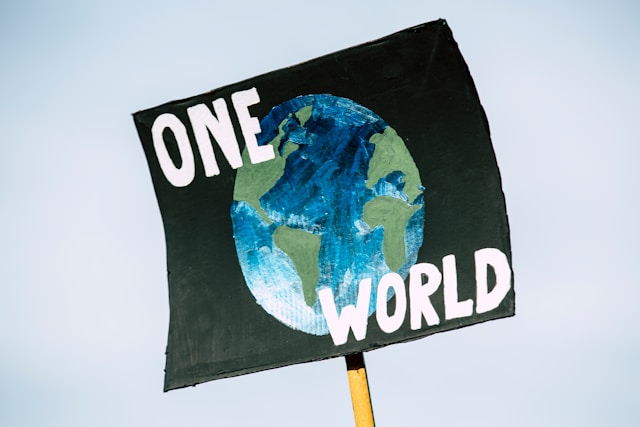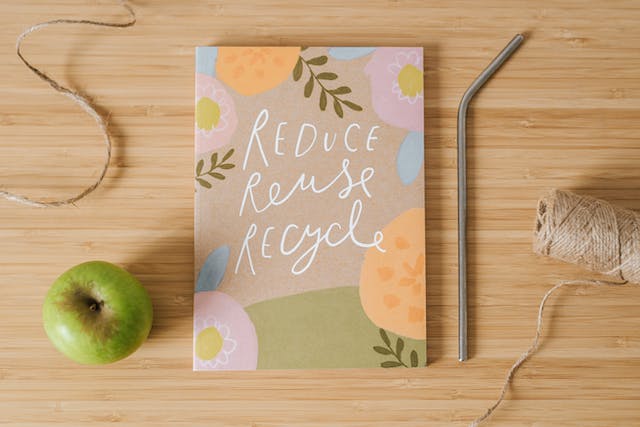Don't miss our holiday offer - 20% OFF!
Must Read: Hidden World of Sustainable Fashion

In today’s fast-paced world, where trends come and go in the blink of an eye, one movement stands out for its enduring impact – sustainable fashion. More than just a passing trend, sustainability in fashion represents a shift towards a more conscious and ethical approach to clothing production and consumption. In this comprehensive guide of Craftigar, we’ll delve into the meaning of sustainability, its importance in the fashion industry, and the advantages it offers to both consumers and the planet.
Before we explore the ins and outs of sustainability in fashion, it’s crucial to address the fundamental question of “why.” Understanding the purpose behind consuming this content and its significance is paramount.
Why Does Sustainable Fashion Matter Now?

The fashion industry stands at a critical crossroads where sustainability has emerged as a pressing priority. With the rise of global awareness surrounding environmental and social issues, consumers, brands, and policymakers alike are increasingly recognizing the urgent need for change within the fashion sector. Here’s why sustainable fashion matters now more than ever, supported by recent data and facts:
1. Environmental Impact
The fashion industry is one of the most resource-intensive and polluting sectors globally. According to the United Nations Economic Commission for Europe (UNECE), the fashion industry is responsible for approximately 10% of global carbon emissions. Additionally, the UNEP-2018 reports that the fashion industry consumes more energy than the aviation and shipping industries combined.
2. Water Consumption
The production of textiles and clothing requires vast amounts of water, contributing to water scarcity and pollution worldwide. The UNEP-2018 also states that it takes around 2,000 gallons (7570.824 litres) of water to make a typical pair of jeans, thrice the amount of water an individual drinks over a three-year period. Furthermore, the dyeing and finishing processes in textile manufacturing contribute to water pollution, with harmful chemicals contaminating waterways and ecosystems.
3. Waste Generation
Fast fashion’s culture of overproduction and disposal has led to staggering levels of waste generation. The Copenhagen Fashion Summit states that the fashion industry produces 92 million tons of textile waste annually, equivalent to one garbage truck of textiles being landfilled or incinerated every second. Moreover, synthetic fibres such as polyester and nylon, commonly used in clothing production, are non-biodegradable and contribute to microplastic pollution in oceans and marine ecosystems.
4. Social Impacts
Beyond its environmental footprint, the current fashion industry is rife with social injustices and labour abuses, particularly in garment-producing countries. According to the International Labour Organization (ILO), an estimated 94 million people are engaged in garment production worldwide.
Additionally, the Ellen Macarthur Foundation states the clothing industry employs more than 300 million people along the value chain. Many of these people work in unsafe conditions, earn poverty wages, and lack job security. Child labour, forced labour, and exploitation are pervasive issues that underscore the need for greater transparency and accountability within the fashion supply chain.
5. Climate Change
The fashion industry’s reliance on fossil fuels, particularly in producing synthetic fibres and textiles, exacerbates climate change by contributing to greenhouse gas emissions. The McKinsey & Company – 2018 research showed that the fashion industry accounts for 4% of global annual emissions. It also estimates that the emissions are projected to increase by 50% by 2030 if current trends continue. Addressing climate change within the fashion industry is crucial to mitigating its impact on the environment and achieving global climate targets outlined in the Paris Agreement.
The urgency of addressing sustainability within the fashion industry cannot be overstated. From its environmental footprint and water consumption to its social impacts and contribution to climate change, the fashion industry’s current trajectory is unsustainable and detrimental to both people and the planet.
However, with increased awareness, collaboration, and collective action, there is hope for a more sustainable and equitable future for fashion.
Understanding Sustainability in Fashion

To move forward towards sustainability, let’s begin with understanding the term ‘sustainability.’ Sustainability in fashion refers to the practice of creating clothing in a way that minimizes negative environmental and social impacts throughout the entire supply chain. This includes sourcing eco-friendly materials, reducing waste and emissions during production, and ensuring fair labour practices.
The Three Pillars of Sustainability!
- Environmental Sustainability: This involves reducing the environmental footprint of fashion by using organic, recycled, or biodegradable materials, minimizing water and energy consumption, and implementing eco-friendly production processes.
- Social Sustainability: Social sustainability focuses on ensuring fair wages, safe working conditions, and ethical treatment of workers throughout the supply chain, from garment factories to farms.
- Economic Sustainability: Economic sustainability involves creating a viable business model that balances profitability with social and environmental responsibility, ensuring long-term success without compromising the well-being of future generations.
Difference Between Conventional and Sustainable Fashion
Conventional Fashion:

- Materials: Conventional fashion often relies on synthetic materials such as polyester, nylon, and acrylic, which are derived from fossil fuels and have a significant environmental impact. These materials may also contain harmful chemicals and toxins.
- Production Practices: Conventional fashion production is often characterized by fast fashion practices, including mass production, outsourcing to low-wage countries, and poor working conditions in garment factories. This can lead to the exploitation of workers, unsafe working conditions, and labour rights violations.
- Transparency: Conventional fashion brands may not always be transparent about their sourcing and production practices. They may prioritize cost and efficiency over ethical and environmental considerations, making it difficult for consumers to know the true impact of their purchases.
- Disposable Fashion: Conventional fashion is synonymous with fast fashion, where trends are quickly produced and disposed of. Garments are often designed to be worn for a short period before being discarded, contributing to the cycle of overconsumption and waste.
- Environmental Impact: Conventional fashion has a significant environmental impact, including pollution, resource depletion, and greenhouse gas emissions. The production of synthetic materials, the use of toxic chemicals in dyeing and finishing processes, and the disposal of clothing contribute to environmental degradation and climate change.
Sustainable Fashion:

- Materials: Sustainable fashion uses eco-friendly materials such as organic cotton, hemp, bamboo, Tencel, and recycled fibres. These materials are grown or produced with minimal environmental impact and often have certifications to verify their sustainability.
- Production Practices: Sustainable fashion brands prioritize ethical and environmentally responsible production practices. This includes fair labour practices, safe working conditions, and transparency throughout the supply chain. Production processes aim to minimize waste, energy consumption, and pollution.
- Transparency: Sustainable fashion brands are transparent about their sourcing, production, and labour practices. They provide information about where their materials come from, how their garments are made, and the social and environmental impact of their operations.
- Longevity and Durability: Sustainable fashion focuses on creating high-quality, durable garments that are built to last. The emphasis is on timeless designs and craftsmanship, rather than fast fashion trends. This approach encourages consumers to invest in pieces that they will wear for years to come.
- Circular Economy: Sustainable fashion embraces the principles of a circular economy, where clothing is designed to be recycled, upcycled, or repurposed at the end of its life cycle. This reduces waste and maximizes the use of resources, creating a more sustainable and closed-loop system.
In summary, sustainable fashion prioritizes ethical and environmentally responsible practices, while conventional fashion often prioritizes profit and efficiency at the expense of people and the planet. By choosing sustainable fashion, consumers can support brands that align with their values and promote positive change in the fashion industry.
Advantages of Sustainable Fashion

By now, you should have a solid understanding of sustainability in fashion, its distinctions from conventional fashion, and why it’s better not to choose non-sustainable options. In this section, we’ll delve deeper into why sustainable fashion isn’t just better—it’s the only viable option you should consider. Have a look at the advantages of fashion which is sustainable:
1. Environmental Benefits
- Reduced Carbon Footprint: By using eco-friendly materials and adopting sustainable production practices, sustainable fashion helps reduce greenhouse gas emissions and mitigate climate change.
- Preservation of Natural Resources: Sustainable fashion promotes the use of renewable resources and minimizes resource depletion, helping to preserve biodiversity and protect ecosystems.
- Waste Reduction: Sustainable fashion aims to minimize waste by implementing practices such as upcycling, recycling, and circular economy models, thereby reducing the burden on landfills and oceans.
2. Social Benefits
- Fair Labor Practices: Sustainable fashion brands prioritize fair wages, safe working conditions, and labour rights, ensuring dignity and respect for garment workers around the world.
- Empowerment of Communities: By supporting local artisans and communities, sustainable fashion contributes to economic development and empowerment, particularly in developing countries where the garment industry plays a significant role.
3. Economic Benefits
- Innovation and Creativity: Embracing sustainability in fashion encourages innovation and creativity, leading to the development of new materials, technologies, and design techniques.
- Long-Term Viability: Sustainable fashion fosters a more resilient and adaptable industry that can withstand economic and environmental challenges, ensuring long-term viability and profitability.
The Role of Consumers in Driving Change

As shoppers, we hold the key to transforming the fashion world with our buying choices. When we pick brands that care about sustainability and fair treatment, we’re shouting out loud to the industry: “We want better!” Whether we go for clothes made from eco-friendly materials, back local makers, or join in clothing swaps, every choice counts in making fashion friendlier to our planet and its people.
Crafting a Sustainable Wardrobe
Building a sustainable wardrobe doesn’t have to be daunting. Ensuring your wardrobe is as sustainable as possible moving forward requires a thoughtful and intentional approach to your fashion choices. Here are some practical steps you can take to transform your wardrobe into a beacon of sustainability:
- Wardrobe Check-up: Take a peek inside your closet and see what’s hanging around. If there are pieces you no longer wear or need, why not give them a new lease on life? Donate, sell, or get crafty and upcycle them into something fresh. It’s a win-win – less clutter, less waste, and room for some fabulous sustainable finds!
- Invest in Timeless Pieces: When adding new items to your wardrobe, prioritize quality over quantity. Look for timeless pieces that are well-made and versatile, ensuring they will stand the test of time both in terms of durability and style. Invest in classic staples like a tailored blazer, a little black dress, or a well-fitting pair of jeans that you can for years.
- Choose Sustainable Fabrics: Opt for clothing made from sustainable and eco-friendly fabrics such as organic cotton, hemp, linen, Tencel, and recycled materials. These fabrics have a lower environmental impact compared to conventional materials and often require less water, energy, and chemicals to produce.
- Support Ethical Brands: Research and support brands that prioritize sustainability and ethical practices throughout their supply chain. Look for certifications such as Fair Trade, GOTS (Global Organic Textile Standard), and B Corp to ensure transparency and accountability in their operations. By voting with your dollars, you can help drive positive change within the fashion industry. Look for brands that are transparent about their sourcing and production practices. Prioritize materials that are eco-friendly and ethically sourced.
Additional Ways to Create Sustainable Wardrobe
- Embrace Secondhand Shopping: Explore thrift stores, vintage shops, and online resale platforms to find unique and pre-loved clothing pieces. Buying secondhand lowers the need for making new clothes and gives old ones a new chance. It’s also a wallet-friendly way to update your wardrobe and help the environment by using fewer resources.
- Care for Your Clothing: Extend the lifespan of your garments by practising proper care and maintenance. Follow care instructions on clothing labels, wash items in cold water, air dry whenever possible, and mend any minor repairs promptly to prevent further damage. By treating your clothes with care, you can prolong their wearability and reduce the need for frequent replacements.
- Swap and Borrow: Get creative with your wardrobe by participating in clothing swaps with friends or borrowing items for special occasions. This not only adds variety to your wardrobe but also promotes a sense of community and reduces the need for new purchases.
- Learn and Teach: Keep yourself updated on sustainable fashion practices and understand how the fashion industry affects the environment and society. Share what you’ve learned with others to encourage them to make better fashion choices. Together, we can spread the word about sustainability and make a positive difference in the fashion industry.
By implementing these strategies, you can transform your wardrobe. Make a sustainable and stylish collection that reflects your values and contributes to a more eco-friendly future. Remember, every purchase you make is a vote for the kind of world you want to live in – choose wisely, and let sustainability guide your fashion journey.
The Bottom Line…
In conclusion, sustainability is not just a buzzword; it’s a fundamental principle that guides the future of fashion. By choosing sustainable fashion, we can make a positive difference for the planet, garment workers, and future generations. Together, let’s embrace a stylish and eco-friendly wardrobe that reflects our values and commitment to a better world.
Ready to join the sustainable fashion revolution? Explore Craftigar’s collection of comfy and sustainable clothing, crafted with care for both you and the planet.
Remember to leave your thoughts in the comments below and share this article with your friends to spread the word about sustainable fashion! Together, we can make a difference.